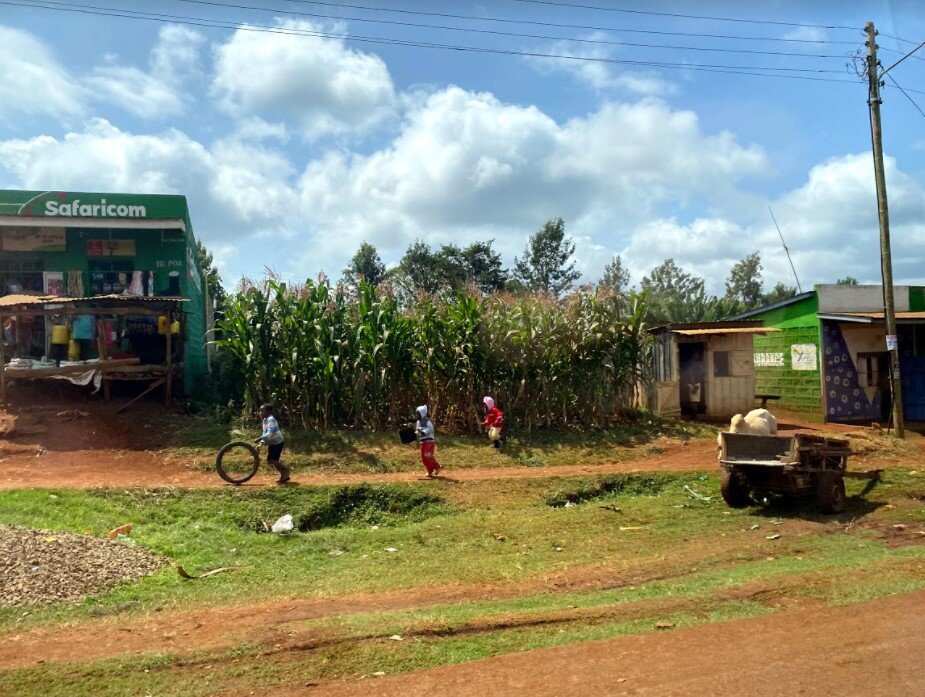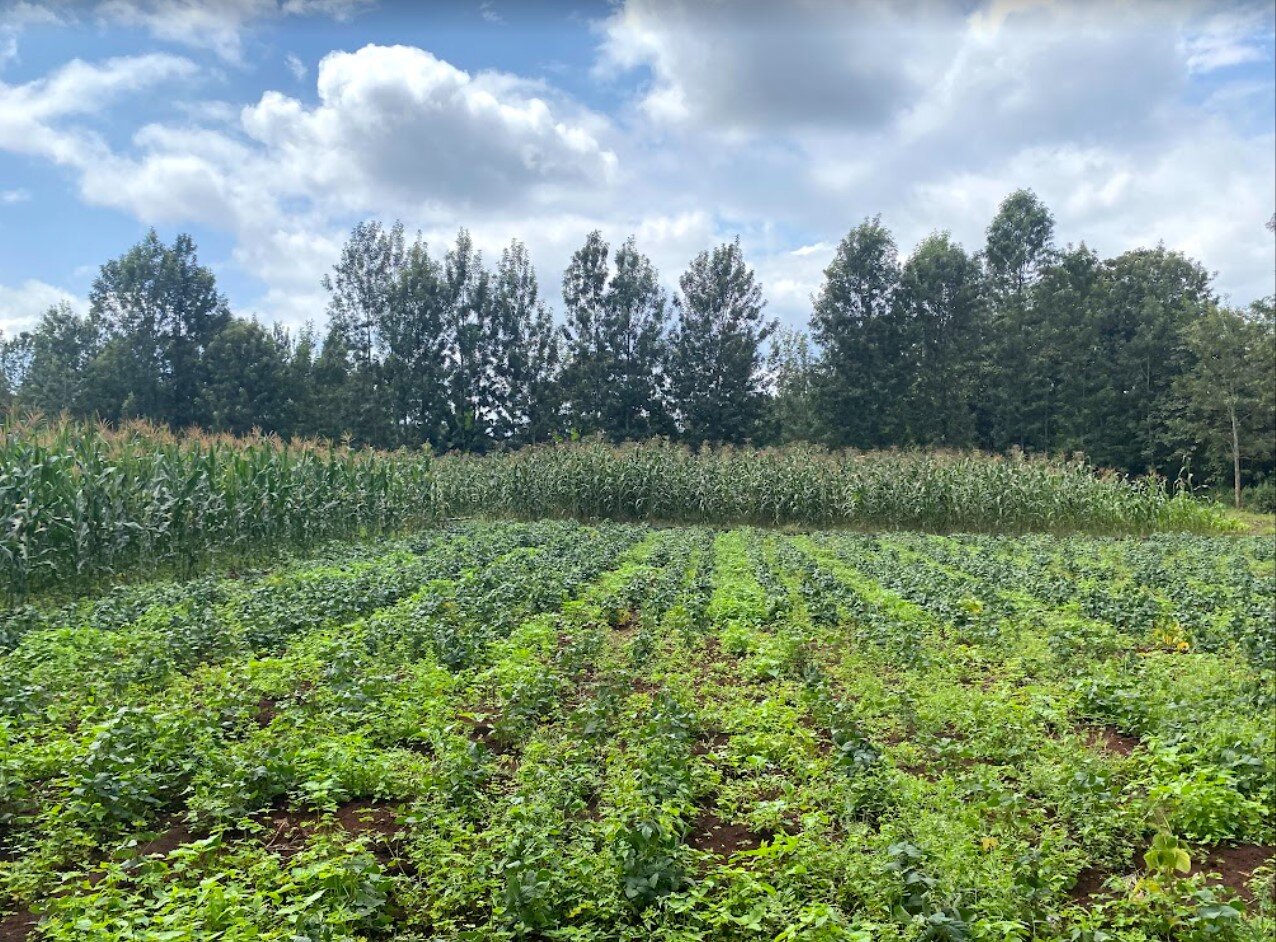Iowan corn and Kenyan corn
I was back home in Iowa a few weeks ago and was struck by how thickly and greenly the corn grew:
It’s hard to go for a bike ride in West Des Moines without running into at least a little corn
Compare this to Kenyan corn (we call it “maize” here):
Left: Small patch of maize parked between two buildings. Centre: Close up of maize field. Right: Part of field is devoted to other crops like soybeans
My pictures aren’t great, but I still think this visually illustrates lessons about the US vs. the Kenyan economy:
Crop variety and risk exposure: Iowan corn is monocropped (i.e., only one crop is grown on large tracts of land), while Kenyan farmers always grow many different crops. A major factor in these decisions is ability to mitigate risk: Iowan farmers can buy insurance and sign advance sales contracts to protect themselves in the case of bad yields or price fluctuations. Kenyan farmers don’t have access to those financial instruments, and so rely to a much greater extent on hedging by planting multiple crops. If maize isn’t selling well, then maybe avocados are.
Scale / farm size: Kenyan farms (average size: <6 acres, with most farmers having ~1 acre) are much smaller than Iowan farms (average size: 355 acres). This means Iowan farmers have more market power, are more easily able to find buyers, and pay less in unit prices for transportation, seeds, fertilizer, etc.
Access to inputs driving yield: See how big, closely planted, and green that Iowa corn is (1)? It is GMO corn, nourished with lots of environmentally-harmful fertilizer, to be used mostly in animal feed, ethanol, and manufacturing. Kenyan corn is non-GMO (almost all GMO crops are illegal), and farmers don’t have access to as much fertilizer. US annual corn yields are ~4,000 kg/acre, while Kenyan yields are 5x lower at 800 kg / acre (2).
—
1. Okay it is a little hard to tell scale in these pictures, and it is later in the season for Kenya than Iowa, but in real life the Iowa corn plants look much larger and healthier to the untrained eye (and I think to the trained eye as well)
2. Kenya bans the importation and growing GMO crops other than cotton. The policy is pretty popular among Kenyan people.
The ban leads to some frustrating situations. Kenyan manufacturers of animal feed are not able to import the cheaper, GMO-grown maize and beans that they process into feed. However, Kenyan farmers are able to import feed from other countries that was made from GMO ingredients. So it is difficult for Kenyan feed manufacturers to compete with imported feed.
Another interesting bit of collateral damage: The lack of access to GMO ingredients makes it difficult for Kenyan feed manufacturers to use futures to hedge their exposure to fluctuations in the prices of their inputs. Feed manufacturers are exposed to risk in non-GMO crop prices, while international futures markets are traded based on GMO crop prices. The GMO and non-GMO prices are not well correlated.
This is not to say that Kenya should allow for GMO crop inputs, just that the ban has unexpected ramifications.



